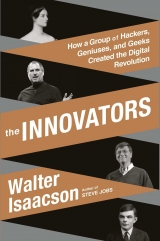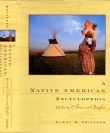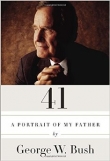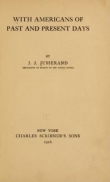
Текст книги "The Innovators: How a Group of Inventors, Hackers, Geniuses, and Geeks Created the Digital Revolution"
Автор книги: Walter Isaacson
Жанр:
Биографии и мемуары
сообщить о нарушении
Текущая страница: 40 (всего у книги 42 страниц)
18. Author’s interview with Tim Berners-Lee.
19. Vernor Vinge, “The Coming Technological Singularity,” Whole Earth Review, Winter 1993. See also Ray Kurzweil, “Accelerating Intelligence,” http://www.kurzweilai.net/.
20. J. C. R. Licklider, “Man-Computer Symbiosis,” IRE Transactions on Human Factors in Electronics, Mar. 1960.
21. Kelly and Hamm, Smart Machines, 7.
22. Kasparov, “The Chess Master and the Computer.”
23. Kelly and Hamm, Smart Machines, 2.
24. “Why Cognitive Systems?” IBM Research website, http://www.research.ibm.com/cognitive-computing/why-cognitive-systems.shtml.
25. Author’s interview with David McQueeney.
26. Author’s interview with Ginni Rometty.
27. Author’s interview with Ginni Rometty.
28. Kelly and Hamm, Smart Machines, 3.
29. “Accelerating the Co-Evolution,” Doug Engelbart Institute, http://www.dougengelbart.org/about/co-evolution.html; Thierry Bardini, Bootstrapping: Douglas Engelbart, Coevolution, and the Origins of Personal Computing (Stanford, 2000).
30. Nick Bilton, Hatching Twitter (Portfolio, 2013), 203.
31. Usually misattributed to Thomas Edison, although there is no evidence he ever said it. Often used by Steve Case.
32. Yochai Benkler, “Coase’s Penguin, or, Linux and the Nature of the Firm,” Yale Law Journal (2002).
33. Steven Johnson, “The Internet? We Built That,” New York Times, Sept. 21, 2012.
34. Author’s interview with Larry Page. The quote form Steve Jobs comes from an interview I did with him for my previous book.
35. Kelly and Hamm, Smart Machines, 7.
PHOTO CREDITS
Lovelace: Hulton Archive/Getty Images
Lord Byron: © The Print Collector/Corbis
Babbage: Popperfoto/Getty Images
Difference Engine: Allan J. Cronin
Analytical Engine: Science Photo Library/Getty Images
Jacquard loom: David Monniaux
Jacquard portrait: © Corbis
Bush: © Bettmann/Corbis
Turing: Wikimedia Commons/Original at the Archives Centre, King’s College, Cambridge
Shannon: Alfred Eisenstaedt/The LIFE Picture Collection/Getty Images
Stibitz: Denison University, Department of Math and Computer Science
Zuse: Courtesy of Horst Zuse
Atanasoff: Special Collections Department/Iowa State University
Atanasoff-Berry Computer: Special Collections Department/Iowa State University
Aiken: Harvard University Archives, UAV 362.7295.8p, B 1, F 11, S 109
Mauchly: Apic/Contributor/Hulton Archive/Getty Images
Eckert: © Bettmann/Corbis
ENIAC in 1946: University of Pennsylvania Archives
Aiken and Hopper: By a staff photographer / © 1946 The Christian Science Monitor (www.CSMonitor.com). Reprinted with permission. Also courtesy of the Grace Murray Hopper Collection, Archives Center, National Museum of American History, Smithsonian Institution.
Jennings and Bilas with ENIAC: U.S. Army photo
Jennings: Copyright © Jean Jennings Bartik Computing Museum—Northwest Missouri State University. All rights reserved. Used with permission.
Snyder: Copyright © Jean Jennings Bartik Computing Museum—Northwest Missouri State University. All rights reserved. Used with permission.
Von Neumann: © Bettmann/Corbis
Goldstine: Courtesy of the Computer History Museum
Eckert and Cronkite with UNIVAC: U.S. Census Bureau
Bardeen, Shockley, Brattain: Lucent Technologies/Agence France-Presse/Newscom
First transistor: Reprinted with permission of Alcatel-Lucent USA Inc.
Shockley Nobel toast: Courtesy of Bo Lojek and the Computer History Museum
Noyce: © Wayne Miller/Magnum Photos
Moore: Intel Corporation
Fairchild Semiconductor: © Wayne Miller/Magnum Photos
Kilby: Fritz Goro/ The LIFE Picture Collection/ Getty Images
Kilby’s microchip: Image courtesy of Texas Instruments
Rock: Louis Fabian Bachrach
Grove, Noyce, Moore: Intel Corporation
Spacewar: Courtesy of the Computer History Museum
Bushnell: © Ed Kashi/VII/Corbis
Licklider: Karen Tweedy-Holmes
Taylor: Courtesy of Bob Taylor
Larry Roberts: Courtesy of Larry Roberts
Davies: National Physical Laboratory © Crown Copyright / Science Source Images
Baran: Courtesy of RAND Corp.
Kleinrock: Courtesy of Len Kleinrock
Cerf and Kahn: © Louie Psihoyos/Corbis
Kesey: © Joe Rosenthal/San Francisco Chronicle/Corbis
Brand: © Bill Young/San Francisco Chronicle/Corbis
Whole Earth Catalog cover: Whole Earth Catalog
Engelbart: SRI International
First mouse: SRI International
Brand: SRI International
Kay: Courtesy of the Computer History Museum
Dynabook: Courtesy of Alan Kay
Felsenstein: Cindy Charles
People’s Computer Company cover: DigiBarn Computer Museum
Ed Roberts: Courtesy of the Computer History Museum
Popular Electronics cover: DigiBarn Computer Museum
Allen and Gates: Bruce Burgess, courtesy of Lakeside School, Bill Gates, Paul Allen, and Fredrica Rice
Gates: Wikimedia Commons/Albuquerque, NM police department
Microsoft team: Courtesy of the Microsoft Archives
Jobs and Wozniak: © DB Apple/dpa/Corbis
Jobs screenshot: YouTube
Stallman: Sam Ogden
Torvalds: © Jim Sugar/Corbis
Brand and Brilliant: © Winni Wintermeyer
Von Meister: The Washington Post/Getty Images
Case: Courtesy of Steve Case
Berners-Lee: CERN
Andreessen: © Louie Psihoyos/Corbis
Hall and Rheingold: Courtesy of Justin Hall
Bricklin and Williams: Don Bulens
Wales: Terry Foote via Wikimedia Commons
Brin and Page: Associated Press
Lovelace: Hulton Archive/Getty Images
Vitruvian Man: © The Gallery Collection/Corbis
TIMELINE CREDITS (IN CHRONOLOGICAL ORDER)
Lovelace: Hulton Archive/Getty Images
Hollerith: Library of Congress via Wikimedia Commons
Bush (first image): © Bettmann/Corbis
Vacuum tube: Ted Kinsman/Science Source
Turing: Wikimedia Commons/Original at the Archives Centre, King’s College, Cambridge
Shannon: Alfred Eisenstaedt/The LIFE Picture Collection/Getty Images
Aiken: Harvard University Archives, UAV 362.7295.8p, B 1, F 11, S 109
Atanasoff: Special Collections Department/Iowa State University
Bletchley Park: Draco2008 via Wikimedia Commons
Zuse: Courtesy of Horst Zuse
Mauchly: Apic/Hulton Archive/Getty Images
Atanasoff-Berry Computer: Special Collections Department/Iowa State University
Colossus: Bletchley Park Trust/SSPL via Getty Images
Harvard Mark I: Harvard University
Von Neumann: © Bettmann/Corbis
ENIAC: U.S. Army photo
Bush (second image): © Corbis
Transistor invention at Bell Labs: Lucent Technologies/Agence France-Presse/Newscom
Hopper: Defense Visual Information Center
UNIVAC: U.S. Census Bureau
Regency radio: © Mark Richards/CHM
Shockley: Emilio Segrè Visual Archives / American Institute of Physics / Science Source
Fairchild Semiconductor: © Wayne Miller/Magnum Photos
Sputnik: NASA
Kilby: Fritz Goro/The LIFE Picture Collection/Getty Images
Licklider: MIT Museum
Baran: Courtesy of RAND Corp.
Spacewar: Courtesy of the Computer History Museum
First mouse: SRI International
Kesey: © Hulton-Deutsch Collection/Corbis
Moore: Intel Corporation
Brand: © Bill Young/San Francisco Chronicle/Corbis
Taylor: Courtesy of Bob Taylor
Larry Roberts: Courtesy of Larry Roberts
Noyce, Moore, Grove: Intel Corporation
Whole Earth Catalog cover: Whole Earth Catalog
Engelbart: SRI International
ARPANET nodes: Courtesy of Raytheon BBN Technologies
4004: Intel Corporation
Tomlinson: Courtesy of Raytheon BBN Technologies
Bushnell: © Ed Kashi/VII/Corbis
Kay: Courtesy of the Computer History Museum
Community Memory: Courtesy of the Computer History Museum
Cerf and Kahn: © Louie Psihoyos/Corbis
Popular Mechanics cover: DigiBarn Computer Museum
Gates and Allen: Bruce Burgess, courtesy of Lakeside School, Bill Gates, Paul Allen, and Fredrica Rice
Apple I: Ed Uthman
Apple II: © Mark Richards/CHM
IBM PC: IBM/Science Source
Gates with Windows disc: © Deborah Feingold/Corbis
Stallman: Sam Ogden
Jobs with Macintosh: Diana Walker/Contour By Getty Images
WELL logo: Image courtesy of The WELL at www.well.com. The logo is a registered trademark of the Well Group Incorporated.
Torvalds: © Jim Sugar/Corbis
Berners-Lee: CERN
Andreessen: © Louie Psihoyos/Corbis
Case: Courtesy of Steve Case
Hall: Courtesy of Justin Hall
Kasparov: Associated Press
Brin and Page: Associated Press
Williams: Courtesy of Ev Williams
Wales: Terry Foote via Wikimedia Commons
IBM Watson: Ben Hider/Getty Images
INDEX
Abbate, Janet, 251
Aberdeen Proving Ground, 38, 72, 73, 97–98, 104, 105
Abound, 395
Acid Tests, 269
acoustic delay line, 101
“Action Office” console, 280
Ada, Countess of Lovelace, 6, 7–18, 446, 493
in affair with tutor, 13, 15
algorithms worked out by, 27–29
Analytical Engine business plan of, 30–32
Analytical Engine potential seen by, 24
Babbage requested to be tutor of, 16–17
Babbage’s first meeting with, 7–8
at Babbage’s salons, 15, 18
Bernoulli numbers computed by, 25, 27–29, 31, 45, 107
on “Combining Faculty,” 23
on connection between poetry and analysis, 7, 9, 17–18, 24, 33, 467, 486, 487
as doubtful about thinking machines, 8, 12, 29, 122, 123, 126, 467–68, 475, 478
on general purpose machines, 26–27, 33, 39, 46, 87, 276, 467
illnesses of, 16, 31, 32
marriage of, 15
“Notes” of, 24–30, 33, 93, 122, 480
opiates taken by, 17, 31, 32
programming explored by, 25–26, 27–29, 88, 90, 107, 108, 478
on subroutines, 28, 93
temperament and mood swings of, 7, 13, 14, 15, 16, 31
tutored in math, 7, 13–14, 16–17
Ada (programming language), 33
Adafruit Industries, 303n
Adams, John, 481
Adams, Samuel, 481
Adams, Sherman, 228–29
Adcock, Willis, 173–74
advertising, 285, 301, 419, 420, 463
Age of Wonder, The (Holmes), 9
Aiken, Howard, 2, 69, 75, 81, 88, 89, 105, 119, 329, 480
Difference Engine of, 50–52, 86, 90
and operation of Mark I, 92–93
stubborness of, 94
Aiken Lab, 329, 334, 336
Air Force, U.S., 221, 238, 241, 247, 282, 305
Albert, Prince Consort, 23–24
Albrecht, Bob, 297, 304
Alcorn, Al, 211–13, 347
algebra, 14, 26
algorithms, 27–29
Allen, Paul, 312, 313, 314, 317, 330–31, 332, 347, 358–59, 367, 416
BASIC for Altair designed by, 332–36, 337
8008 language written by, 325–27
electronic grid work of, 327–28
Gates’s disputes with, 322–23, 328, 338–39, 352, 361
in Lakeside Programming Group, 318–27
PDP-10 work of, 320, 321
“All Watched Over by Machines of Loving Grace” (Brautigan), 267–68, 475
ALOHAnet, 256
Alpert, Dick, 269
Altair, 264, 332, 350
Altair 8800, 309, 310–11, 313
BASIC program for, 332–36, 337, 340–43
exhibition of, 340–41
AltaVista, 227, 436, 459, 462, 463
American Ephemeris and Nautical Almanac, 206
American Physical Society, 165
American Research and Development Corporation (ARDC), 186
America Online (AOL), 395, 399–400, 402, 419, 421, 422
Ames Research Center, 273
Ampex, 208, 211
analog, 56
digital vs., 36–40, 469, 472
Analytical Engine, 21, 22–23, 38, 39, 93, 107, 120, 126, 289, 474
Differences Engine vs., 25–26
Lovelace’s business plan for, 30–32
Lovelace’s views on potential of, 24
Menabrea’s notes on, 24–28
punch cards and, 35, 487
as reprogrammable, 90
Analytical Society, 19
“Anatomy of a Large-Scale Hypertextual Web Search Engine, The” (Brin and Page), 461–62
Anderson, Sean, 460
Andreessen, Marc, 404, 416–17, 421
Android, 381
A-O system, 117
Apollo Guide Computer, 182
Apollo program, 181–82, 257, 280
Apple, 193n, 264, 333n, 352–53, 362–69, 381, 398–99, 434, 483
creativity of, 486–87
headquarters of, 139, 481
Jobs ousted from, 411, 485
lawsuits of, 112
Microsoft’s contract with, 367–69
patents of, 483
Apple I, 352
Apple II, 353, 354, 355–56, 364, 388
AppleLink, 398–99
Apple Writer, 356
Applied Minds, 472
Aristotle, 485–86
Armstrong, Neil, 182
ARPA, 228–29, 230, 231–32, 234–35, 256, 258, 289, 385
funding for, 235–37
ARPANET, 208, 221, 235–37, 246, 250–61, 287, 383, 384, 385, 402, 481, 482
bids on minicomputers for, 251–52
connected to Internet, 258–59
distributed network of, 250, 253
first four nodes of, 252–53, 416
military defense and, 247–51
start of, 255–56
ARPANET News, 261
arsenic, 135
artificial intelligence, 4–5, 122, 226, 284, 285, 455, 468, 470–71
human-machine interaction and, 275, 474–79
as mirage, 468, 469, 474
video games and, 211
Artificial Intelligence Lab, 202–3
Asimov, Isaac, 393
assembly code, 322
assembly line, 20, 32–33
Association for Computing Machinery, 84n
“As We May Think” (Bush), 263, 273, 274, 276, 416, 446, 465, 475
Atanasoff, John Vincent, 54–62, 57, 65–70, 74, 81, 134, 365, 481
influence of, 82, 85
Atanasoff, Lura, 66
Atanasoff-Berry computer, 75
AT&T, 132, 153, 240, 241, 242, 386–87
Atari, 211–15, 265, 329, 347–48, 350, 396
founding of, 210
Atari 800, 356
Atkinson, Bill, 365, 434
Atlantic, 263, 273
atom bomb, 95, 219
Atomic Energy Commission, 120
atomic power, 72
ATS-3 satellite, 271
Augmentation Research Center, 221, 278, 285
augmented intelligence, 274
“Augmenting Human Intellect” (Engelbart), 275, 475–76
Auletta, Ken, 451
Autobiography (Franklin), 378
automata, 19
Automatic Computing Engine (ACE), 120, 242
automobile industry, 183
Aydelotte, Frank, 120
Baba, Neem Karoli, 388
Babbage, Charles, 6, 18–19, 38, 39, 46, 50, 52, 56, 61, 89, 120, 134, 416, 480, 484
Ada’s first meeting with, 7–8
government attack published by, 30
limits of Analytical Engine mistaken by, 27
logarithm machine considered by, 19, 20
Lovelace given credit by, 25
Lovelace’s Analytic Engine business plan and, 30–32
programming as conceptual leap of, 33
weekly salons of, 8, 14–15, 18
Babbage, Henry, 50
BackRub, 458
Baer, Ralph, 215
Baidu, 461
ballistic missiles, 169, 181
Ballmer, Steve, 331–32, 357, 360, 453
Bally Midway, 211, 212, 215
Baran, Paul, 237, 238, 239, 240–41, 242, 245, 246, 260
packet-switching suggested by, 247
Bardeen, John, 130, 132, 145, 160, 173, 211, 480
in dispute with Shockley, 145–49, 152–53, 163
Nobel Prize won by, 164
photovoltaic effect studied by, 142–44
solid-state studied by, 140–41
surface states studied by, 142
Barger, John, 427
Bartik, Jean Jennings, see Jennings, Jean
BASIC, 316–17, 323, 325, 339, 357, 360, 370, 374, 452
for Altair, 332–36, 337, 340–43, 378
batch processing, 224
BBC, 128
Beatles, 310–11
Bechtolsheim, Andy, 463–64
Beckman, Arnold, 154–55, 165, 166
Beckman Instruments, 155
Bell, Alexander Graham, 132, 145, 477
Bell & Howell, 283
Bell Labs, 40, 47–50, 53, 61, 68, 80, 82, 101, 104, 106, 110, 122, 130, 131–34, 157, 172, 189, 221, 286, 480, 482
founding of, 132–33
Murray Hill headquarters of, 138–39
patents licensed by, 149–50
solid-state physics at, 134, 135–36, 138–41
transistor invented at, 131, 227, 414, 485
Bell System, 265
Benkler, Yochai, 444–45, 483
Berkeley Barb, 300, 301
Berners-Lee, Tim, 404, 405–14, 433, 446, 456, 474, 483
background of, 406–8
and creation of browsers, 414–18
hypertext created by, 410–11
and micropayments, 420–21
religious views of, 413–14
Bernoulli, Jacob, 27n
Bernoulli numbers, 25, 27–29, 31, 45, 107
Berry, Clifford, 59, 61
Beyer, Kurt, 91, 93
Bezos, Jeff, 464
audaciousness celebrated by, 163
Bhatnagar, Ranjit, 423
Big Brother and the Holding Company, 270, 297
Bilas, Frances, 86, 97–98
Bilton, Nick, 479
Bina, Eric, 416, 417
binary, 38–39, 49, 50, 54
in code, 76
in German codes, 78
on Z1, 53
Bitcoin, 421n
bitmapping, 364–65
Bletchley Park, 76–79, 81, 84, 94, 110, 120, 122
Blitzer, Wolf, 402–3
Bloch, Richard, 92–93, 104, 105
Blogger, 428–33, 479–80
Blogger Pro, 432
blogs, 423–33
coining of term, 427
McCarthy’s predictions of, 285–86
Blue, Al, 252
Blue Box, 346–47, 351
Board of Patent Interferences, 178
Bohr, Niels, 134
Bolt, Beranek and Newman (BBN), 221, 227, 237, 245, 252, 255, 256, 258, 385
bombe, 78
BOMIS, 437, 440
Bonneville Power Administration, 327–28
Boole, George, 48, 49
Boolean algebra, 49, 54, 58, 123, 344
Borgia, Cesare, 72
boron, 135
Bowers, Ann, 193
brains, 469, 472–73
Braiterman, Andy, 329–30, 331
Braithwaite, Richard, 128
Brand, Lois, 296
Brand, Stewart, 262, 268–72, 278, 279, 280–81, 288, 295–96, 297, 382, 387–89
Brattain, Walter, 130, 132, 134, 137–38, 173, 211, 480
in dispute with Shockley, 145–49, 152–53, 163
Nobel Prize won by, 164
photovoltaic effect studied by, 142–44
solid-state studied by, 139–41
in World War II, 138, 139
Brautigan, Richard, 9, 267, 475
Breakout, 348, 350
Bricklin, Dan, 354–55, 370, 431, 435
Brilliant, Larry, 382, 388–89
Brin, Sergey, 435, 451–55, 458
Google founded by, 458, 460, 462–64
PageRank and, 458–62
personality of, 454
Bristow, Steve, 215
British Association for the Advancement of Science, 484
Brookhaven National Lab, 203, 215
Brown, Ralph, 149–50
browsers, 414–18
bugs, 93–94
Bulletin Board System, 385–86
Burks, Arthur, 118
“Burning Chrome” (Gibson), 384
Burns, James MacGregor, 394
Bush, Vannevar, 7, 34, 37–38, 47, 49, 68, 156, 217–18, 252, 269, 409, 446, 474, 475, 480, 482, 486
background of, 218
computers augmenting human intelligence foreseen by, 263, 273, 274, 276, 363, 384, 401, 416, 446, 465, 475
linear model of innovation and, 220–21
personal computer envisioned by, 263–64, 273, 274, 276
technology promoted by, 218–20, 228
Bushnell, Nolan, 200, 207–10, 211, 212, 215, 347–48
venture capital raised by, 214
Busicom, 196–97
Byrds, 152
Byron, George Gordon, Lord, 7, 9–13, 29, 32, 468
incest of, 10–11, 16
Luddites defended by, 9, 14, 487
portrait of, 6, 12, 15–16
Byron, Lady (Annabella Milbanke), 7, 8, 10–13, 15, 32
Cailliau, Robert, 412–13, 415
Caine Mutiny, The, 165
calculating machines:
of Leibniz, 20
of Pascal, 19–20, 22
calculators, pocket, 182–83, 196, 297
calculus, 17, 37
notation of, 19
California, University of, at Santa Barbara, 252–53
Call, Charles, 82–83
Caltech, 154, 267
CamelCase, 436
capacitors, 58
CapitalLetters, 436
Carey, Frank, 356
Carlyle, Thomas, 2
Cary, Frank, 361
Case, Dan, 393–94, 396
Case, Steve, 382, 394–96, 397, 399, 401
background of, 394
Cathedral and the Bazaar, The (Raymond), 377, 438
cathode-ray tubs, 119
Catmull, Ed, 208
Caufield, Frank, 393, 396
CBS, 109, 116–17, 298–99
CB Simulator, 400
Census Bureau, U.S., 35–36, 116
Centralab, 172
central processing unit, 264
Cerf, Sigrid, 255
Cerf, Vint, 238, 239, 253, 255, 257, 259–60, 403, 481
background of, 257–58
internet created by, 258–59
nuclear attack simulated by, 250–51
CERN, 409–13, 433
Cézanne, Paul, 224
Cheatham, Thomas, 329
Cheriton, David, 463
Chicago Area Computer Hobbyists’ Exchange, 385
Childe Harold’s Pilgrimage (Byron), 10, 12
Chinese Room, 127–28, 470
Christensen, Clay, 288
Christensen, Ward, 385
Church, Alonzo, 46, 47
circuit switching, 237–38
Cisco, 450
Clark, Dave, 260–61
Clark, Jim, 208
Clark, Wes, 236, 251, 252
Clinton, Bill, 121n
Clippinger, Richard, 119
COBOL, 117, 118n, 317, 323, 339, 357
Cold War, 247
Collingwood, Charles, 117
Colossus, 76, 78, 79, 81, 122
as special-purpose machine, 79
Command and Control Research, 229
Commodore, 398
Community Memory, 301–2, 303, 383
Complex Number Calculator, 50, 64, 104
Compton, Karl, 186
CompuServe, 392, 393, 400, 419, 421
computer, 9, 80
debate over, 80–82, 84–85, 481
“Computer as a Communication Device, The” (Licklider and Taylor), 261
Computer Center Corporation (C-Cubed), 319–22
Computer Quiz, 209
Computer Science and Artificial Intelligence Laboratory, 472
computers (female calculators), 72, 73
Computer Space, 209, 210, 212
“Computing Machinery and Intelligence” (Turing), 124–28
Conant, James Bryant, 51, 219
condensers, 58, 66–67
conditional branching, 75
Congregationalist, 189
Congress, U.S., 220
Congress of Italian Scientists, 25
Constitution, U.S., 121n
content sharing, 467
Control Video Corporation (CVC), 393, 396–98
copper, 135
Coupling, J. J., 148
Courant, Richard, 89
Court of Customs and Patent Appeals, 179
Coyle, Bud, 167
CP/M, 357, 358
CPYNET, 384
Craigslist, 301
“Cramming More Components onto Integrated Circuits” (Moore), 183
crawlers, 447–48, 457, 460
Crocker, Stephen, 249–50, 253–55, 257, 481
Cronkite, Walter, 109, 116–17
Crossroads, 399
crowdsourcing, 261, 285
cryptology, 76
CSNET, 383
Cunningham, Ward, 433–34, 436, 439, 441
Cybernetics (Wiener), 272
Dabney, Ted, 208–9
“Daisy Bell (Bicycle Built for Two),” 311
DARPA, 228, 329
Dartmouth University, 68
AI conference at, 468
Darwin, Charles, 124
Data General, 291
Data General Nova, 209, 291
Davidoff, Monte, 333–34, 335, 337, 341
Davies, Donald, 237, 239, 242, 245, 246, 251
debugging, 93–94
decision problem, 44, 45–46, 47, 78
Deep Blue, 470, 471, 475–76
Defense Communications Agency, 241
Defense Department, U.S., 33, 220, 241, 329
ARPA of, see ARPA
de Forest, Lee, 154
Delphi, 401
Democratic National Convention, 1968, 278
De Morgan, Augustus, 17, 26
de Prony, Gaspard, 20
Descartes, René, 122
Difference Engine, 8–9, 13, 20, 21, 21, 25–26, 90, 120, 480
Aikens version of, 50–52, 86, 90
Differential Analyzer, 34, 37–38, 47, 68, 72, 114, 217, 218
differential equations, 37, 73
digital, analog vs., 36–40, 469, 472
Digital Equipment Corporation (DEC), 186, 203, 205, 207, 264, 319–22, 329, 345, 354, 355, 356
diode, 163, 164
Discourse on the Method (Descartes), 122
Domain Awareness System, 472
Dompier, Steve, 310–11
Don Juan (Byron), 11
Doriot, Georges, 186
Dorsey, Jack, 479–80
DOS, 367
Dr. Dobb’s Journal, 372
Drucker, Peter, 192
Duke University, 386
Dummer, Geoffrey, 180
Dynabook, 288–91, 292
Dyson, Freeman, 121
Dyson, George, 103, 108, 120, 121
Earnest, Les, 251, 281
Easy Writer, 356
Eckert, J. Presper, 69, 70–72, 74–75, 81, 82, 83–84, 88, 94, 105, 106, 109, 110, 119, 134, 137, 211, 238, 481
patents sought by, 116, 177
and public display of ENIAC, 114
and storage of programs in ENIAC, 100–101, 106
von Neumann accused of stealing ideas by, 111–12
Eckert-Mauchly Computer Corporation, 116–17
Edison, Thomas, 55, 449
EDSAC, 120
EDVAC, 108, 110, 111–12, 116
Edwards, Dan, 200, 206
Edwards, Elwood, 399–400
Einstein, Albert, 5, 43, 46, 68, 102, 140, 443
Eisenhower, Dwight, 79, 116, 228–29, 304, 436, 482
electrical circuits, 39, 63, 71
needed to break German codes, 78, 79
electricity, 140
Electric Kool-Aid Acid Test, The (Wolfe), 270, 281
Electronic Discrete Variable Automatic Calculator, see EDVAC
Electronic Engineering Times, 180
Electronic News, 179, 199
Electronics, 183
Electronics Magazine, 325
electrons, 134, 136, 137, 141
Elkind, Jerry, 290, 291
Elwell, Cyril, 450
email, 384–85
Emsworth, Lord, 445
Encyclopedia Britannica, 444
Engelbart, Doug, 252, 272–76, 279, 280–81, 282, 283, 290, 293, 294, 297, 308, 354, 363, 388, 416, 474, 475, 478, 480, 486
on human-machine interaction, 272–74, 276–78, 302, 363, 384, 401, 455
English, Bill, 276–77, 280, 290
ENIAC, 69, 74, 79, 86, 87, 106, 131, 481, 482
decimal system used by, 75
as first modern computer, 81, 82
hydrogen bomb equations worked out by, 112–13
patents for work on, 82, 83, 111–12, 116
public unveiling of, 112–16
speed of, 94, 108
storage of programs in, 100–101, 106
update of, 119–20
women as programmers of, 95–100, 117
Enigma, 77–78
Enlightenment, 479
Enquire, 409
Enquire Within Upon Everything, 408, 409, 410, 414
Entscheidungsproblem, 44, 45–46, 47, 78
Esquire, 157, 159, 346
Estridge, Don, 356
Eternal September, 401, 403
Ethernet, 256, 387n, 463
Euclidean geometry, 14
Eudora, 450
Evans, David, 208, 283
Evans, Kent, 319, 323–25
EvHead, 429
Excite, 227, 462
Expensive Planetarium, 206
Eyser, George, 470
Facebook, 156, 260, 301, 485
Fairchild, Sherman, 168, 185
Fairchild Camera and Instrument, 168, 184, 186
Fairchild Semiconductor, 158, 177–79, 193, 199
formation of, 168–69, 171
microchips sold to weapons makers by, 181–82
Noyce’s resignation from, 184–85
Farnsworth, Philo, 71
Federal Communications Commission, 387
Felsenstein, Lee, 266, 272, 292, 295, 298–300, 301–3, 304, 310, 341, 353, 387
Ferranti, 121
Ferranti Mark I, 406
Ferrucci, David, 470
Feynman, Richard, 452
file sharing, 264
Filo, David, 447–48
Firefox, 381, 482, 483
“First Draft of a Report on the EDVAC, by John von Neumann,” 111–12
Fischer, Dave, 401
Flowers, Tommy, 39, 78, 79, 81
influence of, 82
“Fool on the Hill, The,” 310–11
formal systems of mathematics, 43
Fortran, 117, 317, 339, 357
Fortune, 168, 317, 319
Frankenstein, or The Modern Prometheus (Shelley), 12, 29, 468
Franklin, Benjamin, 4, 71, 378, 481
Frankston, Bob, 355
Free Software Foundation, 379
Free Speech Movement, 265, 299–300, 303
French, Gordon, 304, 344
French Revolution, 3
Fuchs, Klaus, 113, 242
Fulghum, Robert, 325
Fuller, Buckminster, 267, 271, 272, 295
Fylstra, Dan, 355–56
Galaxy Games, 210
Gale, Grant, 159
Galison, Peter, 48
GameLine, 393–94, 396
Garcia, Jerry, 266
Gates, Bill, 4, 197, 274, 309, 311, 312, 313, 345, 347, 354, 357, 367, 370, 391, 399, 406, 416, 485
Allen’s disputes with, 322–23, 328, 338–39, 352, 361
background of, 313–18
BASIC for Altair designed by, 332–36, 337
BASIC learned by, 316–17
belief of, in future of personal computer, 329–30
copyright issues and, 341–43, 351, 378
8008 language written by, 325–27
electronic grid work of, 327–28
Evans’s death and, 324, 325
at Harvard, 328–32, 336
innovator personality of, 338–40
Jobs’s dispute with, 368–69
Lakeside Programming Group formed by, 318–27
operating system and, 358–60, 361–62
payroll program written by, 322–23, 338
PDP-10 work of, 319–21
programming’s importance seen by, 118
on reverse-engineering brain, 473
Gates, Mary, 361
Gatlinburg conference, 237, 238, 242
General Electric (GE), 116, 211
General Post Office, 242
general-purpose machines, 26–27, 33, 39, 40, 46, 87, 119, 326–27, 406, 467
Engelbert’s foreseeing of, 276
see also memex
General Relativity, 5, 43
geometry, 17
germanium, 135
Germany, codes of, 78, 79, 81
Gertner, Jon, 134, 138
Gibson, William, 384
Gingrich, Newt, 403
Ginsberg, Allen, 299
GNU, 372–73
GNU/Linux, 377, 378, 379, 441, 482, 483
Go, 210
Gödel, Escher, Bach (Hofstadter), 471
Gödel, Kurt, 43–44, 45, 46, 102, 120
gold, 177–78
Goldberg, Adele, 364
Goldstine, Adele, 73, 96–97, 118, 119
Goldstine, Herman, 69, 73–74, 96, 109, 110–11, 113, 118, 119
von Neumann’s first meeting with, 105–6
Google, 227, 259, 450, 460–65, 471–72, 482, 486
creation of, 458, 460, 462–64
lawsuits of, 112
page ranks of, 482
self-driving cars of, 456
Google Glass, 259–60
Gopher, 415
Gore, Al, 260, 400–403
Gore Act (1991), 402, 416, 423
government funding, 73–74, 482, 484
see also ARPANET
Graetz, Martin, 204, 205
Gran Trak 10, 348
graphic user interface, 363–64, 367–69
Grateful Dead, 266, 270, 389
“Great Conversation, The” (Cerf), 255
Greeks, 72
Greening of America, The (Reich), 267
Greig, Woronzow, 15
Grinnell College, 157, 159, 188
Grove, Andy, 170, 190–92, 193, 197, 481
management techniques of, 194, 195
hackers, 201, 202, 203–7, 254, 268, 299, 378, 504
Hackers (Levy), 202, 298
Hafner, Katie, 245, 260, 389
Haggerty, Pat, 149–51, 168, 173
idea for calculator of, 182–83
Hall, Justin, 404, 422–27, 429, 438, 446, 458
halting problem, 45
Hambrecht & Quist, 393, 396
harmonic synthesizer, 37
Hartree, Douglas, 119
Harvard University, 40, 50–52, 53, 104–5, 106, 222, 271, 328–29
Hayden, Stone & Co., 167, 188
Hayes Smartmodem, 387
Heart, Frank, 252
“Heath Robinson,” 79
Heinlein, Robert, 257, 299
Hells Angel, 270
Hennessy, John, 462
Herschel, John, 19
Hertzfeld, Andy, 368
Herzfeld, Charles, 232–33, 234, 249
Hewlett, William, 154, 156, 189, 464
Hewlett-Packard, 156, 189, 199, 344, 345, 348, 351, 450
High Performance Computing Act (1991), 402, 416
Higinbotham, William, 215
Hilbert, David, 43, 44, 45, 47, 78, 103
Hiltzik, Michael, 290
Hingham Institute Study Group, 205
hippies, 266–67, 268, 272, 305, 309
Hiroshima, 103n
His Majesty’s Government Code and Cypher School, 77
Hitler, Adolf, 78, 79
Hoddeson, Lillian, 310
Hodges, Andrew, 40–41
Hoefler, Don, 199
Hoerni, Jean, 162, 174–75, 176, 184
Hoff, Ted, 193, 196–99
Hofstadter, Douglas, 471
Holberton, Betty Snyder, see Snyder, Betty
Hollerith, Herman, 35–36, 478
Homebrew Computer Club, 304, 310–11, 340, 342, 344, 350, 351, 370, 407, 483–84
Home Terminal Club, 286
Honeywell, 82–83, 121, 330, 336
Hoover Dam, 181
Hopper, Grace, 2, 28, 86, 88–95, 104, 117, 323, 329
communication skills of, 88–89, 90
on ENIAC’s lack of programmability, 95
hired at Eckert-Mauchley, 117–18
subroutines perfected by, 93
Hopper, Vincent, 88
HotWired, 420
HotWired.com, 425–26
Hourihan, Meg, 429–30
House, David, 184
House of Lords, 9, 14
Huffington, Arianna, 427
Huffington Post, 427
Human Brain Project, 473
Human-Computer Interaction Group, 455
human-machine interaction, 4–5, 225–26, 227–28, 229, 231, 272–74, 276–78, 302, 363, 384, 401, 449–50, 455–56, 459, 464–65, 474–79
Hush-A-Phone case, 386–87
hydrogen bomb, 112–13, 238
HyperCard, 434
hypertext, 264, 410–13
limitation of, 456–57
Hypertext Markup Language (HTML), 411, 419, 426, 429
Hypertext Transfer Protocol (HTTP), 411
IAS Machine, 120
IBM, 53, 64, 82, 118, 121, 168, 197, 251, 304, 353–54, 356–63, 398–99, 470–71, 473, 475, 477, 478
dress code at, 215
founding of, 36
Gates’s deal with, 337
Jobs’s criticism of, 362–63
Mark I history of, 2, 91
Mark I of, 2, 51–52, 81, 89–90
IBM 704, 468
IBM 1401, 282–83
Idea Factory, The (Gertner), 134
Illich, Ivan, 302–3, 304
imitation game, 124–28
incompleteness theorem, 43–44, 45
indeterminacy, 43
individualism, 265
Industrial Revolution, 3, 7, 9, 18, 479
two grand concepts of, 32–33
Infocast, 392
Information Processing Techniques Office (IPTO), 229, 231, 233–34, 248, 286–87
Information Sciences, Inc. (ISI), 322–23, 324
Infoseek, 227
innovation, 260, 486–88
assembly lines in, 32–33
bureaucracies vs., 240–41
and corporate culture, 189, 217
patents and, 215
social atmosphere for, 2
stages of, 150
synergy and, 183
teamwork and, 1, 84, 85, 91–92, 108, 110, 246, 260, 479–86
Institute for Advanced Study, 73, 77, 102, 118
Institute of Radio Engineers, 174
integrated circuit, see microchips
Integrated Electronics Corp, see Intel
Intel, 170, 187–99, 265, 280, 350, 351, 482
culture of, 189–95, 235, 481, 484–85
employees empowered at, 193–95
initial investments in, 187–88, 213
microprocessor of, 196–99
Intel 8008 microprocessor, 325–26
Intel 8080 microprocessor, 305, 306, 308
Interface Message Processors (IMPs), 237, 251–52, 253, 255, 256
see also routers
Internatioal Joint Conference on Artificial Intelligence, 449
Internet, 9, 72, 217–61, 383–403, 482
ARPANET as precursor to, 208; see also ARPANET
built by collaboration, 4–5
built to facilitate collaboration, 2–3
creation of, 257, 258–59
as decentralized, 250
legislation on, 400–403
nuclear weapons and, 247–51
personal computers and, 4
Internet Engineering Task Force, 260–61, 411, 414
Internet Protocol (IP), 259, 293
interstate highway program, 402
iOS, 381
Iowa State, 55, 56, 57, 60, 61, 65, 68, 81, 481
iPad 2, 486–87








